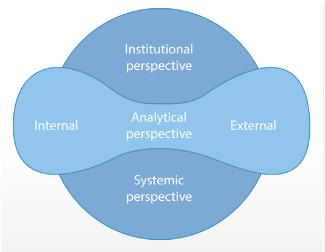Google, Ikea And J&J: Three Strategic Approaches To Success
By IESE Insight
Einstein is often paraphrased as saying “everything should be made as simple as possible, but not simpler.”
These are words to live by when it comes to company strategy, which is often explained in terms that are either too simple or too complex.
There is no shortage of definitions of strategy, but there is often a gap between its theory and its practice. This is because the theory of strategy attempts to explain why companies succeed or fail, whereas the practice of strategy seeks to identify specific courses of action to solve problems and take advantage of opportunities on the ground.
Carlos Rey of UIC Barcelona and Joan E. Ricart, IESE’s holder of the Carl Schroeder Chair of Strategic Management, seek to narrow the gap. In an article titled, “The Practice of Strategy,” they propose a model to help harmonize business model innovation and company principles while meeting market demands.
The Big Three
Strategy is all about the logic behind making choices. But while logic may seem intrinsic to an individual, it often comes from very distinct areas, which can cause friction in company strategy. The authors have identified three types of strategic logic: analytical, institutional and systemic:
- Analytical logic deals with cause and effect. For example, “an increase in customer satisfaction of 10 percent leads to a 6 percent increase in market share.”
- Institutional logic considers a company’s values, and applies them to the situation to make a decision. While it might be expected that analytic logic would play a far greater role in strategy, thinking about appropriateness and the organizational identity is also very significant in practice.
- Systemic logic employs a mixture of experience and intuition. It can fly in the face of hard data, but it is also often used by professionals with many years’ experience in the sector. An example would be the idea that “the key to success in the automotive sector is having a strong brand.”
These three logics go a long way to understanding how three experts in a company, based on the same facts and figures, can arrive to three entirely different conclusions about a strategy going forward.
It also explains how star companies may have taken vastly different roads to reach their success.
Logic and Perspective
Google’s immense success can be seen as a product of analytical logic, Johnson & Johnson’s as coming from their values (institutional logic) and Ikea’s as an example of systemic logic taking a central role.
Each of the three logics pertains to a larger strategic perspective, which represent how the practice of strategy develops.
- Analytical perspective is developed deliberately through reasoning and is based on hard data, economic trends and market forces. The strategies derived from this perspective are simple, specific and prescriptive. The analytical perspective, broadly speaking, has two dimensions: external — business environment, sector, market, threats — and internal — resources and capabilities.
- The institutional perspective is usually expressed through tools such as the company’s mission statement, but this is just a symbolic representation of it. This is largely a subconscious perspective and becomes a default when the company does not explicitly define its own strategy. It is the institutional perspective, moreover, which inspires people to place the company’s interests ahead of their own. It also fosters a long-term view.
- The systemic perspective is developed through a profound knowledge of the real world of any given business. It often develops in an uncontrolled or unplanned way as events unfold, and influences strategy in the business model.
No one perspective is enough to make a company successful, even the examples above of Google, Johnson & Johnson and Ikea. In fact, while each can be seen to excel at a certain perspective, it is the integration of all three that creates strong businesses. The authors explain this integration with their SIA — for Systemic, Institutional, Analytical — model.
Take Ikea: its innovative business model has been accompanied by an ambitious business plan and solid institutional values. Ikea’s primary competitive advantage lies in the alignment and combined excellence of the three types of strategic logic.
SIA Model
In the SIA model, consistency between the three strands of logic is also important. A company that performs well in one logic, but contradicts itself in another, is unlikely to triumph overall.
Examples of such inconsistencies might be a low-price strategy at a company with a premium business model, repeated lay-offs at a company with values that emphasize trust, or a mission statement of “exceeding client expectations” at a low-cost company.
Practice What You Preach
Moving from theory to practice, the authors worked with a management team within a multinational energy company applying their SIA model as a means to reflect on strategy. They defined the company’s business model and those of its main competitors, then redefined the mission and values and reviewed objectives and budgets. By the time the process was complete, appetite for change and evolution was high in the management team.
The speed and agility in implementing the planned changes surprised both the authors and the participating managers. The difference had arisen from the method: rather than just defining strategy and informing the team, the strategy had been defined taking the different skill sets and strategic logics within the company into account.
In one company, at least, the gap between strategic thinking and action had narrowed dramatically.


